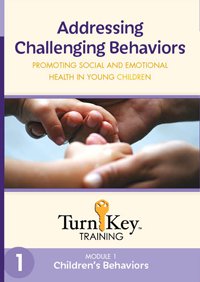
Module 1: Children’s Behaviors
Lesson One: Child Development

Lesson One : Videos

Developmental Milestones
-
Objectives:
- Participants will understand that each child develops at her own rate and in her own way.
- Participants will begin to compare their observations of children to developmental
milestones, using what they learn to support children?s progress toward the milestones that
are likely to come next. - Participants will be able to use developmental milestones to develop realistic expectations
for each child, to select individualized teaching strategies, and to offer appropriate activities
to engage each child and support their continuing development. - Participants will understand the value of individualized teaching strategies for increasing
engagement and meaningful learning, while reducing the likelihood of challenging behavior. - Participants will know about resources they can share with families.
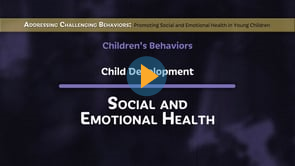
Social and Emotional Health
-
Objectives:
- Participants will understand the importance of social and emotional health as the foundation
for learning. - Participants will know the importance of positive relationships with the children they care
for and teach. - Participants will understand their role in supporting healthy social and emotional health.
- Participants will understand the importance of social and emotional health as the foundation
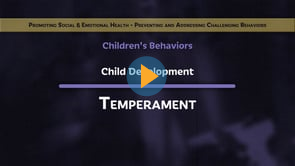
Temperament
-
Objectives:
- Participants will understand the role of temperament in both children?s and adults? behavior.
- Participants will identify the three general categories of temperament, along with common
characteristics of each type of temperament. - Participants will recognize the power of temperament to influence relationships in positive
and negative ways. - Participants will understand their responsibility to recognize challenges caused by
temperament and to work toward a goodness of fit by building positive relationships with
children.
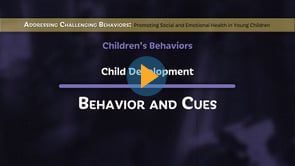
Behavior and Cues
-
Objectives:
- Participants will understand that behavior is often a response to what we see, hear, and feel.
- Participants will identify a variety of nonverbal behavior cues that can help them anticipate
and manage challenging situations more effectively. - Participants will increase their awareness of their own behavior cues and what they
communicate to children. - Participants will be able to reduce challenging behavior by adopting strategies in their
classroom environments to support children?s exploration and learning.
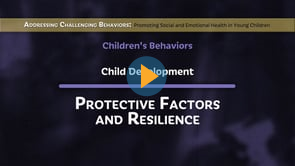
Protective Factors and Resilience
-
Objectives:
- Participants will define and understand the impact of protective factors and risk factors on
resilience. - Participants will identify some protective factors that can buffer children from risks.
- Participants will understand their power to support protective factors through intentional
teaching strategies.
- Participants will define and understand the impact of protective factors and risk factors on

Lesson One: Supplementary Materials


